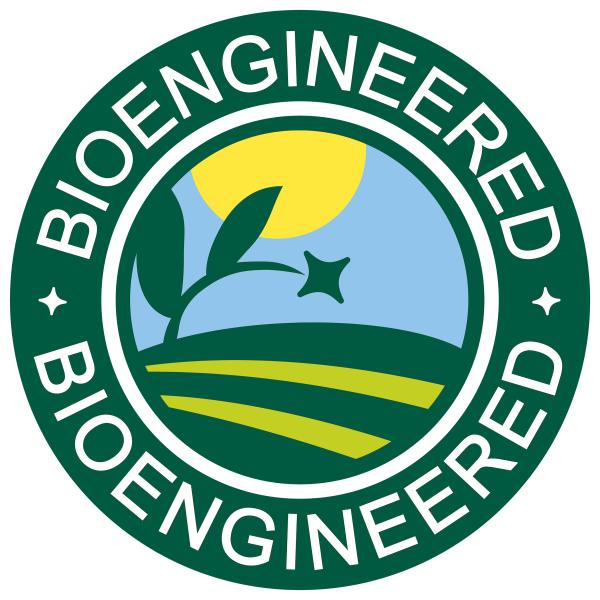Beginning in January, we'll see many more products in grocery stores carrying the USDA's 'bioengineered' food label. The new labeling scheme was mandated by the National Bioengineered Food Disclosure Standard (NBFDS), which Congress passed in July 2016. Much has been written about the law, but there are two points most relevant to us as consumers as the enforcement deadline approaches: the labeling regulations will cost billions of dollars, and the labels themselves will provide zero useful information about the safety or nutritional content of the foods we buy.
This is quite frustrating, but there's an important lesson to learn from this ordeal. Allowing environmental activists to dictate public policy has serious consequences, as we're all about to find out again next month.
A useless label
To briefly recap a complicated story, the anti-GMO movement launched a massive effort almost 10 years ago to pass food labeling laws in dozens of US states. There was an intense PR battle between activist groups and scientists over the need for GMO food labels. “We have a right to know what we're eating,” one side argued, while the other claimed that labels should provide useful information to consumers. Since genetically engineered crops don't pose a health risk to consumers, there is no scientific justification to label foods made from them.
Credit: USDA
Vermont was the only state to approve a “right to know” law in 2014, but this was superseded by the NBFDS two years later. The federal legislation technically settled the legal dispute, although nobody was happy with the compromise. The new labels use neutral language, annoying anti-GMO groups who hoped to use labeling to stoke the public's fear of biotechnology, as they did in Europe. The science community was displeased as well because the regulations set out by the NBFDS are insanely confusing to everyone.
Here's just one example, brought to us by ACSH advisor Dr. Henry Miller and attorney Drew Kershen. Under the NBFDS, two identical bottles of corn oil, derived from the same field and identical in processing and quality, could be labeled differently. This is because food companies can choose not to label products derived from bioengineered ingredients if the final product (like cooking oil) doesn't contain any “detectable” genetically engineered material. So, one maker of corn oil may choose to label its product and another may not, yet both would comply with the NBFDS. Insanity.
I rarely find myself in agreement with the lawsuit-happy Center for Food Safety, but they are correct on this narrow point: detectability is a silly threshold for mandatory labeling. The better choice would be to abandon the NBFDS entirely because it's useless. The USDA said as much in 2018:
The proposed NBFDS is not expected to have any benefits to human health or the environment. Any benefits to consumers from the provision of reliable information about BE [bioengineered] food products are difficult to measure.
… Useless and expensive
Here's the best part. The NBFDS will cost somewhere between $569 million to $3.9 billion—and that's just in 2022. After that, the USDA Agricultural Marketing Service (AMS) has noted, ongoing annual costs will range from $51 million to $117 million annually. “AMS stated that the annualized costs in perpetuity would be $68 million to $234 million at a 3 percent discount rate and $91 million to $391 million at a 7 percent discount rate,” according to a 2019 report from the Government Accountability Office.
Parenthetically, it's possible that the labeling regulation could limit consumer access to certain products. The ongoing supply chain issues are hindering the food industry's ability to implement the labels, which means non-compliant products would have to be pulled from grocery store shelves until they could be properly labeled. As Agripulse reported recently:
'The challenges [sic] we are having right now is you cannot change a label overnight. That typical process of changing a label generally takes at least two years,' [said Betsy Booren, senior vice president of regulatory and technical affairs at the Consumer Brands Association]. 'With Covid, we are having challenges with the supply chain and labor, getting materials, whether that’s packaging materials, the printing of packaging materials. Certain ingredients are being subbed out because their suppliers are having the same supply chain and labor issues.”
Actions have consequences
Miller and Kershen argued that “Congress should pass a new law that repeals the NBFDS and preempts states' ability to create their own food-labeling requirements.” But the ultimate solution to these sorts of regulatory pitfalls is an informed public that can see fringe environmental activism for what it is—utter foolishness.
That means journalists have to consistently report what the evidence says about biotech crop safety, which they still don't. It was only this year that the New York Times published an essay repudiating its many years of botched reporting on this issue. We also need public universities and high schools to quit using anti-GMO documentaries and textbooks in the classroom. Yes, this really happens.
We get the government we deserve, as the cliché goes. If nothing changes, we'll continue to deal with ham-fisted science and technology policies that serve no useful purpose but cost a whole bunch of money we don't have.




